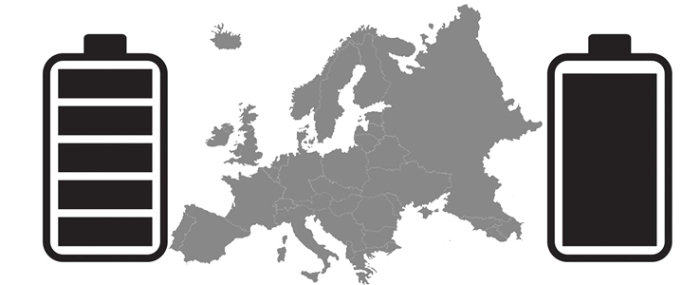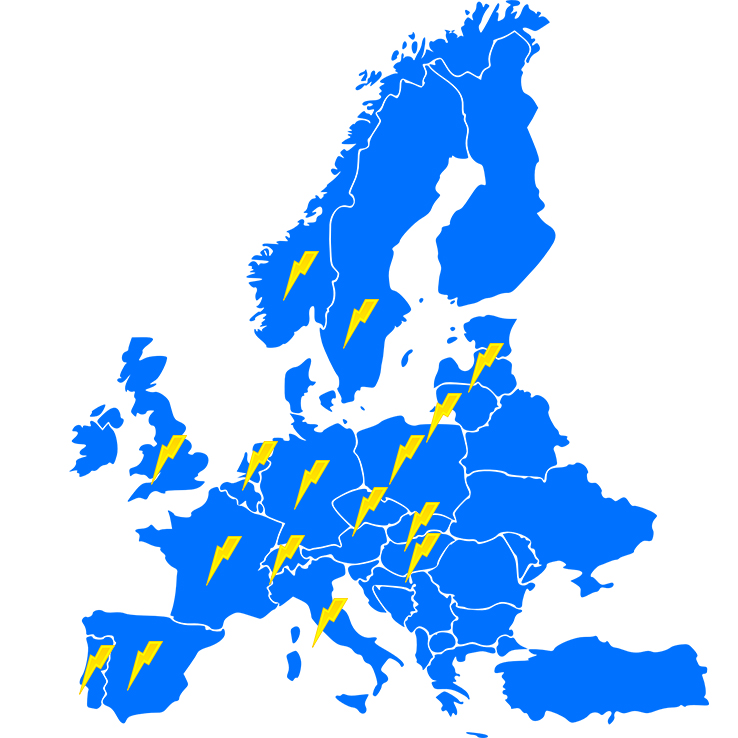
Europe’s battery boom – charging a market
"The future is electric", a statement that’s been getting more and more meat on its bones over the last couple of years. An increasing number of automotive companies are transitioning to electronic electric drive.
As the European Commission puts it, the automotive industry is crucial for Europe’s prosperity. And the transitioning, or rather, electrification of the industry is going to be a massive change. Evertiq’s research shows that the European battery industry could exceed 2,000 GWh by the end of the decade. So let's take a closer look at Europe’s battery cell production capacity and the industry's versatility.
After a ten-year growth journey, the annual – planned – production capacity for battery cells could amount to just over 2,100 GWh by 2030. A capacity that would be enough for 32 million electric passenger cars, as many vans, six million buses and just over four million trucks.
However, this assumes that all planned production facilities reach their desired capacity according to previously communicated schedules and that there are no issues relating to finances, raw materials, policies, infrastructure, workforce or geopolitical obstacles in the way.
The current number of planned battery factories in Europe amounts to 50, and these are located in 17 different countries. The facilities are run by 41 different companies, and the majority of these have their roots in the region.

| Ranking | Country | Capacity (GWh) |
|---|---|---|
| 1 | Germany | 280,6 |
| 2 | Hungary | 227,3 |
| 3 | Norway | 153 |
| 4 | France | 144 |
| 5 | The UK | 128,5 |
| 6 | Poland | 115 |
| 7 | Sweden | 110 |
| 8 | Spain | 100,1 |
| 9 | Italy | 93,83 |
| 10 | Portugal | 45 |
| 11 | Serbia | 16 |
| 12 | Latvia | 10 |
| 13 | The Netherlands | 3,2 |
| 14 | Russia | 3 |
| 15 | The Czech Republic | 1,2 |
| 16 | Switzerland | 1,2 |
| 17 | Slovakia | 1 |
| Totalt | 1 432.93 | |
| Potential additional capacity | 727.1* | |
| Potential total capacity | 2 160.03 |
*The capacity reserve, or potential additional capacity, contains cell capacity that may appear within this decade. This is a capacity that has been communicated in one way or another – in the media or press releases – but without specifying dates for the projects. For example, InoBat has announced that it wants to build a factory in Spain with a capacity of 32 GWh, but not when.
Automotive Cells Company and Envision AESC were – until spring this year – the companies with the most amount of factories spread across the continent, with three each. But following Volkswagen’s launch of Powerco this May – a company that will shoulder the automotive giant's battery business – the European battery industry will have a new number one. Powerco plans to have six plants ready to go live during the current decade, which translates to a total annual capacity of 240 GWh, out of which one 40 GWh plant will be built in Germany. Adding to this, Powerco also has the potential to become the largest employer in the industry, as its recruitment need is said to be up to 20,000 employees.
Germany is regionally the biggest producer of battery cells and has a dozen companies contributing to its planned 280.6 GWh, a capacity that could potentially end up being much bigger. The company with the smallest capacity would be Germany’s Cellforce, with 0.1 GWh. The most common cathode material is NMC (Nickel, Manganese and Cobalt), closely followed by cobalt-free LFP (Lithium Iron Phosphate) which, together with solid-state batteries, are on the rise.
Germany – a prime example of Europe's battery industry
Germany is a prime nation to use for exemplifying the diversity of the European battery industry. German contains everything from Tesla in Grünheide, which has previously indicated that its factory alone could achieve an estimated capacity of 200 GWh and create up to 10,000 jobs, and EAS in Nordhausen with 40 employees who will enable a capacity of 0.5 GWh. You have companies such as Volkswagen-owned Powerco which is exclusively focused on passenger cars, to Univercell which ignores the sector completely and instead focuses on energy, construction machinery, robots, shipping and electric aircrafts. Chinese Svolt, a company that will have two plants in Germany, uses the most amount of cathode material combinations, specifically NMC, LFP and cobalt-free NMX (75 percent nickel and 25 percent manganese).
Wide range of applications
Out of 40 companies, 13 are completely focused on the automotive industry, which includes cars, vans, buses and trucks. 20 have a mixed customer base from an average of three segments. The most common combination is the automotive industry, stationary energy storage and industrial applications in the form of utility vehicles and robots. The remaining six companies are not active in the automotive industry, but focus on two or more other sectors – commercial vehicles such as construction machinery, or shipping, space and aviation, agriculture, trains, defense, telecommunications, medical technology, charging stations and, in a few cases, even sports cars.
Evertiq's survey of the European battery industry will be presented in its entirety during the Evertiq Expo in Tampere on 30 November.
